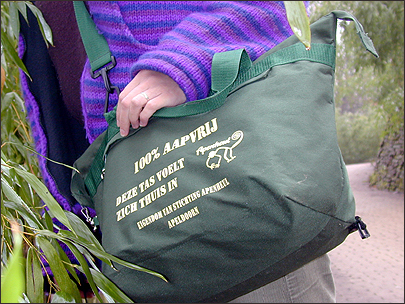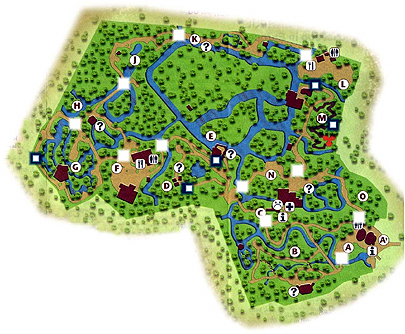Jul 24, 2007The Apenheul Primate Park offers visitors a unique, intimate experience.Located in the Netherlands, the 32-acre park houses 35 species of monkeys, apes and lemurs, many of which roam the grounds freely and often come into close contact with visitors.
This new zoo concept proved extremely successful following the park's opening in 1971, but by the time it reached its 30th birthday, the zoo had become a little too popular. "We were having 'traffic jams' in the park," says Bert Smit, the park's head of marketing and education, explaining that throughout the day, clusters of visitors often formed at various areas inside the park, making it difficult for people to pass.

The heavy traffic jams were not just bad for visitors, who had to wait on increasingly long lines and whose visibility of the animals was becoming degraded, but also for the monkeys, who shied away from the large, noisy crowds.
It was clear the park needed to redesign its facilities, visitor programs, or—more likely—both, to accommodate its growing crowds of more than 5,000 visitors per day. Before doing so, however, the park's administrators sought a better understanding of the park's areas of heaviest use, as well as where, when and why traffic built up throughout the day. To obtain the data, it would need to determine these factors, the park turned to RFID technology.
From July to October of 2005, the park sampled traffic flow by collecting the locations and times of tag-read events from active RFID tags carried by visitors. Distributing and collecting the tags was simplified by sewing the tags into 200 of the more than 5,000 green canvas "monkey bags" the zoo provides all visitors.
According to Smit, visitors are told to place all purses, backpacks and other carried items into the green zippered bags, which help keep valuables out of the primates' reach. The primary motivation for the policy, though, was to curtail the animals' growing tendency to steal snacks from visitors. "The monkeys were getting more and more food that they should have not gotten, and were getting sick," says Smit.
For the project, the park selected Wavetrend's TG-501 active tag, which has a slim profile because it was designed for use as part of a personnel tag. Eleven Wavetrend readers—which can read the 433 MHz tags from up to 10 meters away—were mounted throughout the park to provide the level of tracking that park administrators considered accurate for the sampling of visitor tracking they desired. The tags and readers use a proprietary air-interface protocol.
"If they had a problem with it, they could get another [non-tagged] bag," Smit explains, adding that because there was no linkage between the tag ID and the person carrying it, the park did not consider the program an invasion of its guests' privacy. Although a few guests did request non-tagged bags, he says, most did not object to carrying the tags.

In total, Smit says, the 200 tagged bags were distributed a total of 10,000 times throughout the four-month test. While the park initially hoped to develop a software program that would enable staff to monitor tag movement throughout the park in real time, Smit says budgetary restrictions prohibited that from happening. Instead, it partnered with nearby Tilburg University, which helped it deploy the tags and readers. Interns from the school pulled the many thousands of tag reads collected daily by the interrogators, using Microsoft Access to plot the data onto charts showing each read's time and location.
Armed with this additional visibility, the park enacted a number of changes that improved traffic flow. It added walkways and increased the frequency of some of its interactive presentations, for instance, both of which helped to decrease the traffic jams. This, Smit says, made the park more enjoyable for both visitors and the resident primates.
These changes have allowed the park to meet one of its main redesign goals, Smit states, noting, "We wanted to keep people flowing, but we didn't want them to leave the park any sooner than they normally would. We want to keep them here as long as possible."
The park intends to again use the tagged bags for another project next year. This time, says Smit, it hopes to attain insight into visitors' demographics and interests, which would entail obtaining their consent in carrying the bags.

